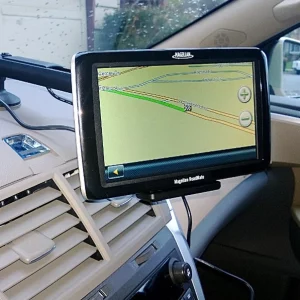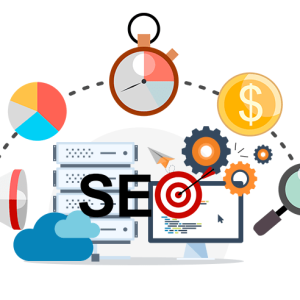The Internet of Things (IoT) has been a game-changer in the past decade, altering the face of facilities management as we know it. When it comes to fulfilling the demands of current demand for efficiency, sustainability, and, most importantly, user pleasure, facility management may rely on the cutting-edge technologies and solutions provided by the Internet of Things (IoT), which range from energy optimization to predictive maintenance. We will discuss the pros and cons of the Internet of Things solution development, how it is influencing our future, and how it is altering the landscape of facility management in this post.
Why is the Internet of Things Important for FM?
The “internet of things” (IoT) refers to a system of interconnected physical objects that function and collect data over the internet. Internet of Things (IoT) applications rely heavily on smart devices like thermostats and sensors to automate and monitor different building functions in real-time. Automation and real-time monitoring of the building’s HVAC, lighting, security, and energy systems are made possible with the aid of the Internet of Things.
A simple water consumption monitor, for instance, might immediately alert the facilities management to the possibility of a leak, allowing them to prevent extremely costly damage. Similarly, smart thermostats may control the temperature of a building based on the presence or absence of people, ensuring comfort for residents while reducing energy use.
Internet of Things Advantages for Facility Management
- Systematic Upkeep
Thanks to the Internet of Things (IoT), we can track how well machines are doing in real time, which helps with predictive maintenance and making the most of our operations. For example, vibration sensors installed in HVAC systems can detect abnormalities, allowing management to schedule repairs in advance of major breakdowns.
- Improving Energy Efficiency
Most facilities’ operational expenses are mostly attributable to energy costs; however, by improving building systems through the Internet of Things (IoT), substantial savings can be achieved. Applications linked to the internet of things (IoT), such as smart meters and connected lights, track energy use and find ways to save it. Rooms that are unoccupied can have their lights turned off by motion detectors, and the temperature in such rooms can be changed in real time according to environmental data. In addition to helping achieve sustainability goals, these innovations will lead to substantial savings.
- Renewed Focus on the Occupant
At the heart of any modern institution nowadays is the user’s ease. With the use of IoT technology, customized environments may be created by automatically optimizing temperature, lighting, and overall quality. When the conference space is full, sensors can sense it and adjust the temperature and lighting accordingly, creating an even more comfortable environment for those who are there. Integrating IoT into facility management solutions allows for the automation of lighting, climate control, and quality of environment improvement, which in turn allows for the creation of individualized settings.
- Improvements in Safety
Connected webcams and automated doors are only two components of an IoT-based security system that can alert users and keep tabs on their whereabouts in real time. By observing who accesses these zones without permission, remotely restricting access simply by a few clicks, and more, they can make sure their assets and personal occupants are protected. Improving security and preventing breaches requires the use of configurable data access rights.
- Asset Management Made Easier
Large buildings sometimes include a lot of assets, such furniture, machinery, and IT equipment, which may be a lot to manage. By utilizing RFID tags and the Global Positioning System which offer real-time information on the location and condition of assets, the World Wide Web of Things simplifies this process. This innovation in technology allows for better allocation of resources, ensures precise tracking, and helps to avoid misplaced or missing items. Facility administration may be rendered even more useful and effective by integrating Internet of Things ( IoT ) into existing systems.
Internet of Things Difficulties Facing Facility Managers
While there are numerous advantages to the Internet of Things (IoT), there are also some implementation obstacles, such as:
The Safety of Data
Because of the wealth of information they hold, cybercriminals view IoT devices as simple targets. Data encryption, firewall protection, and regular software upgrades are strong cybersecurity measures that facility managers should employ to keep critical information safe.
Linking Up with Existing Infrastructure
Lots of buildings are still using antiquated software that doesn’t play along with the Internet of Things (IoT) that’s available now. There may be a significant financial and time investment required to prepare the present infrastructure for the Internet of Things.
Upfront Expenses
Internet of Things infrastructure can have a hefty price tag when first set up. Nevertheless, the investment is usually justified by the savings in the long run.
Data Deluge
Without the proper tools to organize and analyze the massive volumes of data generated by the IoT, it may be rather tough to make sense of the information. To get useful insights out of this data, facility managers use analytics solutions.
Improved operational efficiency and optimized maintenance through predictive analytics are two benefits of integrating IoT devices with facility management software.
The Internet of Things in Practice
Intelligent Structures in Saudi Arabia
The kingdom of Saudi Arabia is pouring a lot of money into smart building technology. Internet of Things (IoT) technologies are already in place for a variety of purposes, including energy management, water saving, and increased occupant comfort. As an example of a sustainability endeavor, the new Riyadh government buildings were able to operate its HVAC and lighting systems through the Internet of Things, which reduced operational expenses.
U.S. Academic Administration
The Internet of Things (IoT) is being used by American educational institutions and corporate campuses to increase operational efficiency. For example, security systems that communicate to the internet can keep an eye on things all day long, rendering the workplace and school safer for everybody.
Internet of Things Developments That Might Affect Future of F
The future of the internet of things (IoT) in facilities management is bright. The Internet of Things (IoT) will continue to evolve as a result of advancements in artificial intelligence (AI), neural networks, machine learning, and 5G, resulting in smarter and quicker systems. Keep an eye on these important trends:
- Digital Twins: Smart facility managers employ computational twins, which are virtual representations of actual assets, to mimic and track activities in real-time.
- Sustainability measures: Reducing waste and increasing energy consumption are two sustainability goals that the Internet of Things (IoT) may help achieve.
- Cost effective Solutions: Solutions that are both cost-effective and feature-rich in order to meet the unique requirements of every facility are smart IoT systems.
Improvements in operational efficiency and new innovations will be spurred on by the complementary work of the Internet of Things (IoT) and facilities management.
Conclusion
From increased operational efficiency to happier occupants, the benefits of the Internet of Things are obvious. Having the correct processes in place to handle any obstacles and careful preparation are essential for a successful deployment. Facility managers can improve their workdays and lead the way in innovation by embracing the Internet of Things (IoT). The prospects of facility management is bright, interconnected, and full of possibilities thanks to the ever-improving technology. Facility managers may improve efficiency in operation and user experience by using comprehensive and scalable solutions for facility management.

